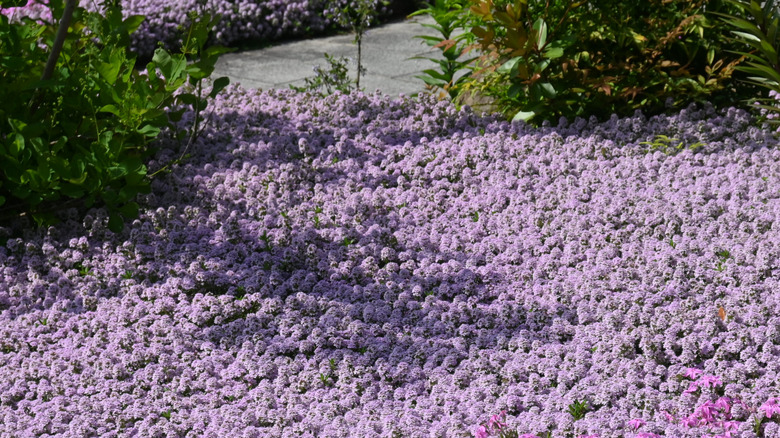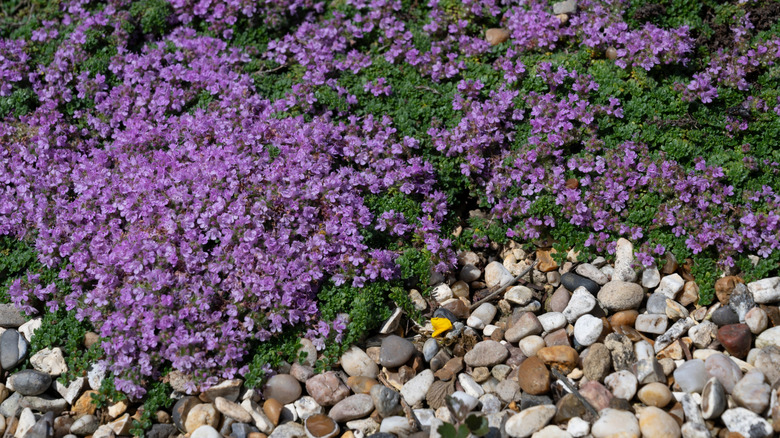The Easy Mulching Trick That Will Help The Creeping Thyme In Your Garden Thrive
A low-growing and quick-spreading perennial, creeping thyme (Thymus serpyllum) has become a popular option for a sprawling groundcover or walkway border. Producing delicate purple flowers on trailing stalks through the summer, this hearty member of the Lamiaceae, or mint, family is a low-maintenance option that's extremely drought tolerant and can handle a good deal of foot traffic. But its spreading tendrils, which remain in constant contact with the soil, can easily become waterlogged in wet areas, causing the plant to rot. By adding a layer of pea gravel mulch to your garden, you can successfully grow creeping thyme and help it thrive during the wettest months of the year.
Hardy in USDA hardiness zones 4 to 8 and native to Europe, Asia, and northern Africa, creeping thyme requires full sun and remains evergreen in areas with mild winters. It grows best in loose, sandy, or rocky soil. Its wiry strands can extend up to a foot in length, forming a crosshatched mat of petite, slightly fuzzy leaves that produce an earthy, herbal fragrance when disturbed. This dense growth and lush green carpet may even help prevent weeds from taking over your garden. But excess soil moisture can wreak havoc on your plants' health. Providing a barrier of pea gravel is a great way to protect the foliage from wet soil and increase heat absorption, so your plants stay dry, warm, and healthy.
The benefits of mulching with pea gravel
When choosing the best type of mulch for your garden, it's important to keep your plants' needs in mind. Standard wood chip mulches are a common choice, but they may not provide the drainage support your creeping thyme requires. Pea gravel, made of stones less than half an inch in diameter, allows more water to pass through than organic mulch, even when layered 3 inches above the ground. Because it blocks the creeping thyme's foliage from touching the wet soil underneath, it reduces the risk of rot. It may also help deter weeds better than larger stones, allowing your creeping thyme to spread without competition. And, unlike wood chips, your pea gravel mulch won't need to be replaced year after year, making it a low-maintenance and cost-effective option.
Pea gravel has another superpower: heat retention. After soaking up the sun's rays all summer, pea gravel will continue to warm the ground as temperatures drop, aiding your soil's overall health and nurturing the ecosystem below the surface. Your creeping thyme will love the boost of warmth during winter, especially in areas that receive a few cold snaps during a generally mild season. With cozy roots and little excess moisture, your creeping thyme will return to bloom atop its pea gravel bed year after year.

